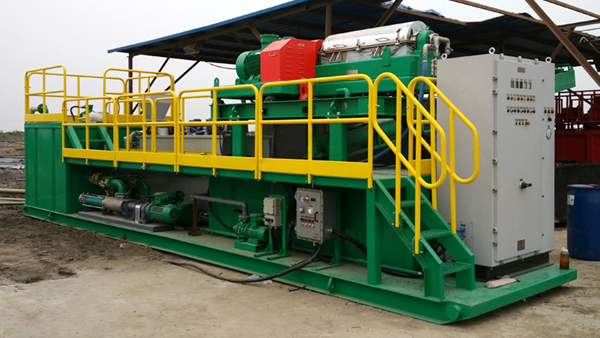- Home
- Services
- Solids Control & Waste Management
- Equipment Portfolio
- Waste Management Equipment
- Waste Oil Recovery Centrifuge
Waste Oil Recovery Centrifuge

IDEC waste oil recovery decanter centrifuges are specially designed to meet the separation requirements of the waste oil processing industry. The waste oil is normal consist of oil water and solids. IDEC separation equipment offers high performance separation solutions to the 3 phase separation with maximum oil recovery.
IDEC waste oil recovery decanter centrifuges are specially designed to meet the separation requirements of the waste oil processing industry. The waste oil is normal consist of oil water and solids. IDEC separation equipment offers high performance separation solutions to the 3 phase separation with maximum oil recovery. Moreover the IDEC waste oil recovery centrifuge specially designed to allow users to capture more solids and discharge dry cake dryness at higher capacity and less energy consumption.
The waste oil recovery and treatment include following:
- Oil storage tank bottom solids and water and oil
- Oily residues, slop oils from oil refineries
- Oil sludge lagoons
- Oil water mixtures from ship ballasts
- API oil water separator sludge treatment
- Industry discarded lubricant oils and emulsions
- Industrial oil / water and emulsion waste streams
Advantage of IDEC Waste Oil Recovery Centrifuge:
- More sizes available with big length/diameter ratio of 4.2:1 or greater.
- High G force up to over 3000 G.
- Two phase or 3 phase separation decanter is available.
- Nitrogen purged centrifuge for explosion proof.
- Duplex Stainless Steel bowl for Corrosion resistant materials
- VFD control with HMI and PLC for automatically operation.
- Variable bowl speed, differential speed, and adjustable pump capacity for the system.
- Various scroll and bowl wear protection systems by tungsten carbide materials.
- Customized design with flexibility according to clients requirements.
- Worldwide partners and branches to offer you fast support for your waste oil recovery.
Depends on customer’s requirements for the source of the waste oil and make-up of the raw material as well as the quality of the products after processing. The selection of equipment and process will be different, but a typical waste oil processing plant will include following.
- Separation of solids from the waste oil.
- Reducing the viscosity by using chemical or heating.
- Breaking the emulsions and make oil, water and solids bound in the emulsion accessible by de-emulsifier dosing for decanter centrifuge separation.
- Polymer dosing dewatering to improve the separation efficiency.




